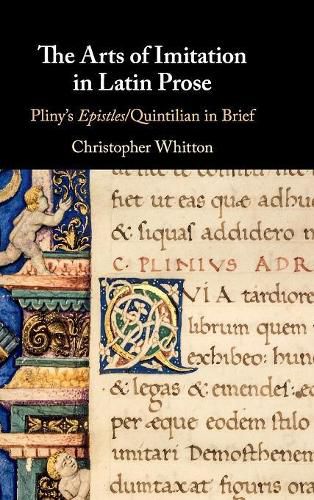Readings Newsletter
Become a Readings Member to make your shopping experience even easier.
Sign in or sign up for free!
You’re not far away from qualifying for FREE standard shipping within Australia
You’ve qualified for FREE standard shipping within Australia
The cart is loading…






Imitation was central to Roman culture, and a staple of Latin poetry. But it was also fundamental to prose. This book brings together two monuments of the High Empire, Quintilian’s Institutio oratoria (‘Training of the orator’) and Pliny’s Epistles, to reveal a spectacular project of textual and ethical imitation. As a young man Pliny had studied with Quintilian. In the Epistles he meticulously transforms and subsumes his teacher’s masterpiece, together with poetry and prose ranging from Homer to Tacitus’ Dialogus de oratoribus. In teasing apart Pliny’s rich intertextual weave, this book reinterprets Quintilian through the eyes of one of his sharpest readers, radically reassesses the Epistles as a work of minute textual artistry, and makes a major intervention in scholarly debates on intertextuality, imitation and rhetorical culture at Rome. The result is a landmark study with far-reaching implications for how we read Latin literature.
$9.00 standard shipping within Australia
FREE standard shipping within Australia for orders over $100.00
Express & International shipping calculated at checkout
Imitation was central to Roman culture, and a staple of Latin poetry. But it was also fundamental to prose. This book brings together two monuments of the High Empire, Quintilian’s Institutio oratoria (‘Training of the orator’) and Pliny’s Epistles, to reveal a spectacular project of textual and ethical imitation. As a young man Pliny had studied with Quintilian. In the Epistles he meticulously transforms and subsumes his teacher’s masterpiece, together with poetry and prose ranging from Homer to Tacitus’ Dialogus de oratoribus. In teasing apart Pliny’s rich intertextual weave, this book reinterprets Quintilian through the eyes of one of his sharpest readers, radically reassesses the Epistles as a work of minute textual artistry, and makes a major intervention in scholarly debates on intertextuality, imitation and rhetorical culture at Rome. The result is a landmark study with far-reaching implications for how we read Latin literature.